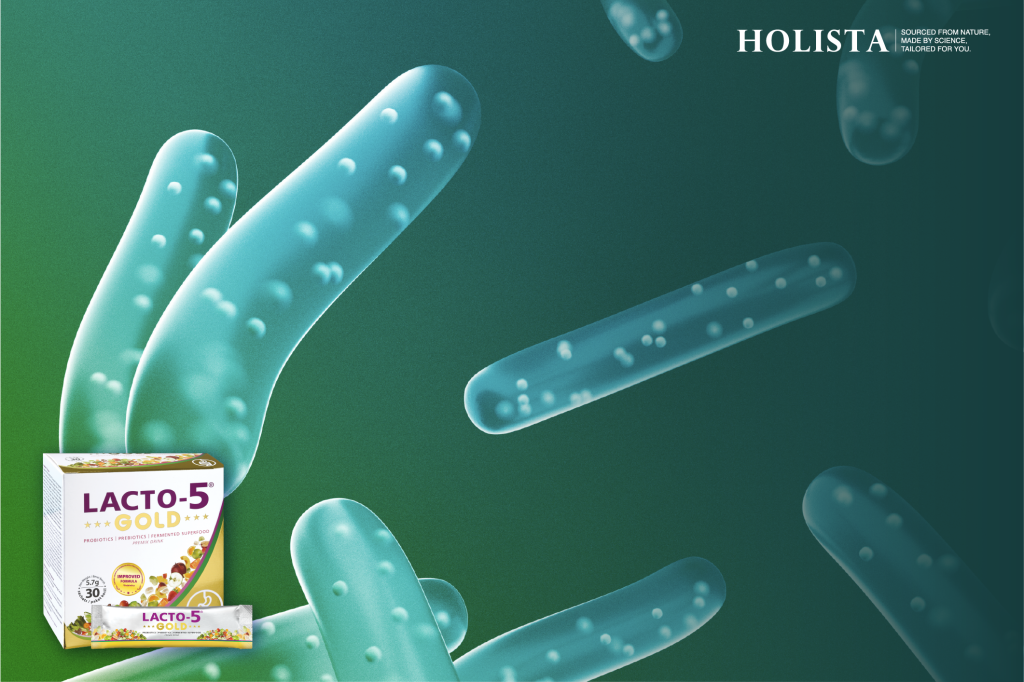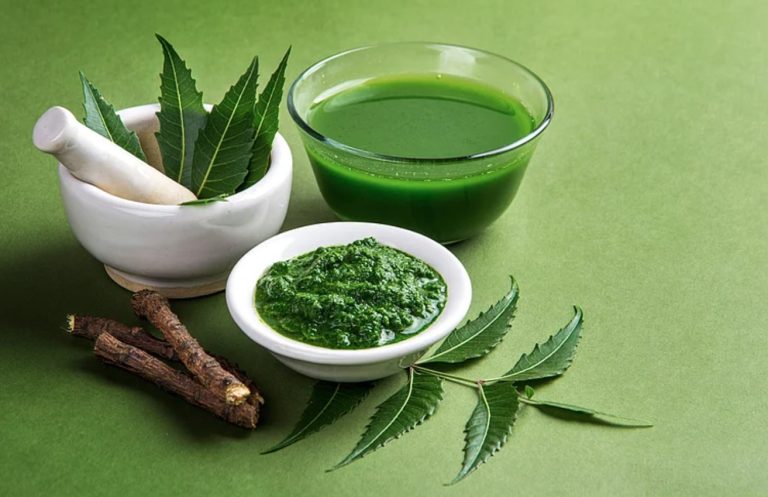Boost Defenses against Colds, Flu, and Allergens

Scientists have identified a probiotic and yeast fermentate combination that reduced cold and flu frequency by 55% and reduced days with nasal congestion by 43%.
Millions of Americans suffer from colds, flu, and seasonal allergies every year.
Medications only target the symptoms but don’t address the underlying causes.
Scientists have discovered two unique ingredients—a dried yeast fermentate + a probiotic—that help prevent these symptoms and reduce their severity and duration if they do occur.
Clinical studies show that supplementation with a dried yeast fermentate resulted in:
Increases in secretory IgA levels, an antibody that provides mucosal immune defense against viruses and bacteria, and
Increases in natural killer cell activity that destroys infected cells.
In a clinical study, the use of the probiotic L. rhamnosus CRL1505 resulted in:
47% higher levels of secretory IgA levels,
55% fewer cold and flu occurrences, and
46% fewer cases of fever.
Together, these ingredients work in multiple ways to enhance immune defenses and dramatically reduce the number of cold, flu and allergy occurrences.
Preventing and Limiting Symptoms
Medications can provide temporary relief for cold, allergy, and flu symptoms, but they do nothing to prevent them.
Side effects of these drugs can include drowsiness, constipation, headache, rapid heartbeat, and sleep problems. Certain allergy drugs, known as anti-cholinergic, have been linked to an increased risk of Alzheimer’s disease.
Scientists have identified two ingredients that help prevent cold and flu episodes.
These ingredients are:
A dried yeast fermentation and
A probiotic strain called Lactobacillus rhamnosus CRL1505.
Each of these ingredients boosts activity of immuno-globulin A (IgA), an antibody that provides immune defense against viruses and bacteria.
Additionally, supplementation with dried yeast fermentate offers relief for people with allergies.
The Discovery of Yeast’s Immune Benefits
The immune benefits of yeast fermentate were discovered purely by accident.
A company in Cedar Rapids, Iowa was producing a specialized yeast culture when it became clear that its factory workers—exposed daily to the yeast through inhalation—were using far fewer sick days than the office workers.
Scientists investigated and found that, compared to the office staff, factory personnel had significantly higher levels of the antibody secretory IgA. Secretory IgA is known to block pathogens from penetrating mucosal surfaces.
They also had increased activity of natural killer cells, which can destroy cells infected by viruses.
The company went on to develop the dried fermentate using a proprietary fermentation process and baker’s yeast. Six placebo-controlled clinical trials have since validated its ability to protect against colds, flu, and allergies.
Yeast’s Allergy Defense
Scientists conducted a pilot study on 25 healthy individuals, giving them either a placebo or 500 mg of dried yeast fermentate daily for five weeks at the start of allergy season.
Several in the yeast group saw clear improvements. About a quarter of those who received the yeast reported a complete absence of allergy symptoms, which returned within two weeks after they stopped taking the yeast fermentate.
Seasonal allergies did not change in the placebo group.
Researchers then conducted a clinical study of people with a history of seasonal allergies and hay fever. Participants took either a placebo or 500 mg of dried yeast fermentate once daily.
The first half of the 12-week study took place during the year’s highest pollen-count period. Compared to the placebo group, those taking yeast had a median of 43% fewer days with nasal congestion, along with decreased severity of runny nose and nasal congestion.
Yeast Fermentate’s Cold and Flu Protection
Scientists conducted two clinical studies to test the yeast fermentate’s effect on cold and flu-like symptoms.
In one, they gave a daily dose of 500 mg of the dried yeast fermentate to 116 individuals with a mean age of 37. The trial was conducted from January through March, peak cold and flu season.
At the end of 12 weeks, compared to the placebo group, the yeast-treated group had experienced a 13% reduction in cold or flu-like symptoms. These included headache, fever, general aches and pains, fatigue, nasal stuffiness, sore throat, cough, and chills.17
The other study was virtually identical, except that the participants were an average age of 44. The yeast-treated group had an 11% reduction in the incidence of cold or flu-like symptoms and a 17% reduction in the duration of symptoms.
How Yeast Fermentate Works
Allergy symptoms affect the eyes, nose, throat, lungs, or skin. They are chiefly caused by anti-bodies called immunoglobulin E (IgE), which trigger the body’s release of chemicals such as histamine that cause these reactions.
In the pilot study that first showed yeast fermentate’s ability to relieve allergy symptoms, blood levels of IgE increased among placebo recipients as allergy season went into full swing, indicating heightened allergic responses.
In those taking the yeast, IgE levels increased only slightly, indicating far less of an allergic reaction. This demonstrated that yeast fermentate decreases allergic tendencies by stabilizing IgE levels.
Scientists also investigated yeast’s ability to help prevent colds and flu.
When given a single 500 mg dose of dried yeast fermentate, volunteers had significantly increased levels of markers of activity of natural killer cells within just two hours. These immune cells specifically target and kill cells infected by viruses, such as those that cause colds and flu.
When healthy subjects were given 500 mg of yeast fermentate daily for eight weeks, they also had a significant increase in secretory IgA, an antibody that defends against viruses and bacteria.
A Probiotic’s Cold and Flu Protection
The probiotic strain Lactobacillus rhamnosus CRL1505 was originally isolated from goat’s milk by scientists in northwestern Argentina.
Because it was shown to decrease respiratory infections in children, the Argentine government has been safely providing L. rhamnosus
CRL1505 to over 300,000 school children annually since 2008.
Preclinical studies show that this probiotic may help fight the viruses and bacteria that cause the common cold, influenza, bronchitis, and pneumonia.
A team of nutritionists, pediatricians, and immuno-logists designed a randomized, controlled trial. They enlisted 298 healthy children between ages two and five, a group particularly susceptible to respiratory infections.
Five days a week, the treatment group was given 100 million CFU (colony-forming units) of L. rhamnosus CRL1505 in a yogurt drink. The placebo group received a yogurt drink without the addition of the beneficial probiotic bacteria L. rhamnosus CRL1505.
A common misconception is that all yogurt is a good source of probiotics. In fact, it is only when the exact beneficial bacterial strain is present in the correct amounts that these healthy microorganisms can reliably convey their benefit.
After six months, compared to the placebo group, the children in the probiotic group had experienced:
49% fewer infections,
55% fewer cases of cold or flu,
46% fewer cases of fever,
47% increase in levels of secretory IgA, and
33% less antibiotic use.
The treatment group also had 61% fewer cases of tonsillitis and pharyngitis (an infection in the back of the throat).
How the Probiotic Works
Antibodies known as IgA constitute an important element of the immune system. Secreted from mucous membranes including the nose, mouth, and lungs, IgA can bind to respiratory viruses and block them from invading cells, infecting us, and causing colds, flus, and other respiratory infections.
The trial that used the L. rhamnosus CRL1505 in schoolchildren found that this probiotic significantly increases levels of secretory IgA, suggesting that this is one way the probiotic enhances immune protection against cold and flu viruses.
Taken together, this probiotic and the dried yeast fermentate can provide optimal protection against colds, flu, and allergies, any time of year.
Summary
Human studies have shown that a yeast fermentate safely reduces the occurrence, severity, and duration of allergy, cold, and flu-like symptoms.
The probiotic Lactobacillus rhamnosus CRL1505 also provided protection against colds and flu in a high-risk population, including by supporting secretory IgA levels.
These two ingredients work in multiple ways to boost immune defenses against viruses and bacteria, enhancing antibodies and natural killer cell activity and providing an anti-allergy effect.
References:
- Jensen GS, Patterson KM, Barnes J, et al. A Double-Blind Placebo-Controlled, Randomized Pilot Study: Consumption of a High-Metabolite Immunogen from Yeast Culture has Beneficial Effects on Erythrocyte Health and Mucosal Immune Protection in Healthy Subjects. The Open Nutrition Journal. 2008;2(1):68-75.
- Jensen GS, Redman KA, Benson KF, et al. Antioxidant bioavailability and rapid immune-modulating effects after consumption of a single acute dose of a high-metabolite yeast immunogen: results of a placebo-controlled double-blinded crossover pilot study. J Med Food. 2011 Sep;14(9):1002-10.
- Villena J, Salva S, Núñez M, et al. Probiotics for Everyone! The Novel Immunobiotic Lactobacillus rhamnosus CRL1505 and the Beginning of Social Probiotic Programs in Argentina. International Journal of Biotechnology for Wellness Industries.
- Available at: https://www.webmd.com/allergies/allergy-statistics. Accessed January 20, 2022.
- Skoner DP. Complications of allergic rhinitis. J Allergy Clin Immunol. 2000 Jun;105(6 Pt 2):S605-9.
- Juhn YJ. Risks for infection in patients with asthma (or other atopic conditions): is asthma more than a chronic airway disease? J Allergy Clin Immunol. 2014 Aug;134(2):247-57; quiz 58-9.
- Available at: https://www.cdc.gov/features/rhinoviruses/index.html. Accessed January 20, 2022.
- Tantilipikorn P. The relationship between allergic rhinitis and viral infections. Curr Opin Otolaryngol Head Neck Surg. 2014 Jun;22(3):249-52.
- Available at: https://www.cdc.gov/flu/about/burden/2019-2020.html. Accessed January 20, 2022.
- Available at: https://www.cdc.gov/flu/highrisk/65over.htm. Accessed January 20, 2022.
- Available at: https://www.rxlist.com/allergy_medications/drug-class.htm. Accessed January 20, 2022.
- Gray SL, Anderson ML, Dublin S, et al. Cumulative use of strong anticholinergics and incident dementia: a prospective cohort study. JAMA Intern Med. 2015 Mar;175(3):401-7.
- Moyad MA, Robinson LE, Kittelsrud JM, et al. Immunogenic yeast-based fermentation product reduces allergic rhinitis-induced nasal congestion: a randomized, double-blind, placebo-controlled trial. Adv Ther. 2009 Aug;26(8):795-804.
- Moyad MA, Robinson LE, Zawada ET, Jr., et al. Effects of a modified yeast supplement on cold/flu symptoms. Urol Nurs. 2008 Feb;28(1):50-5.
- Available at: https://www.sciencedirect.com/topics/neuroscience/secretory-immunoglobulin. Accessed January 20, 2022.
- Schauss AG, Vojdani A. Discovery of edible fermentation product with unusual immune enhancing properties in humans. The FASEB Journal. 2006;20(4):A143-A.
- Moyad MA, Robinson LE, Zawada ET, et al. Immunogenic yeast-based fermentate for cold/flu-like symptoms in nonvaccinated individuals. J Altern Complement Med. 2010 Feb;16(2):213-8.
- Jensen GS, Carter SG, Reeves SG, et al. Anti-inflammatory properties of a dried fermentate in vitro and in vivo. J Med Food. 2015 Mar;18(3):378-84.
- Reid G, Kort R, Alvarez S, et al. Expanding the reach of probiotics through social enterprises. Benef Microbes. 2018 Sep 18;9(5):707-15.
- Salva S, Villena J, Alvarez S. Immunomodulatory activity of Lactobacillus rhamnosus strains isolated from goat milk: impact on intestinal and respiratory infections. Int J Food Microbiol. 2010Jun 30;141(1-2):82-9.
- Available at: https://www.conicet.gov.ar/yogurito-llegara-a-cada-rincon-del-pais-gracias-al-plan-argentina-contra-el-hambre/. Accessed January 24, 2022.
- Zelaya H, Tsukida K, Chiba E, et al. Immunobiotic lactobacilli reduce viral-associated pulmonary damage through the modulation of inflammation-coagulation interactions. Int Immunopharmacol. 2014 Mar;19(1):161-73.
Source:
https://www.lifeextension.com/magazine/2022/4/boost-defenses-against-cold-flu-allergens





